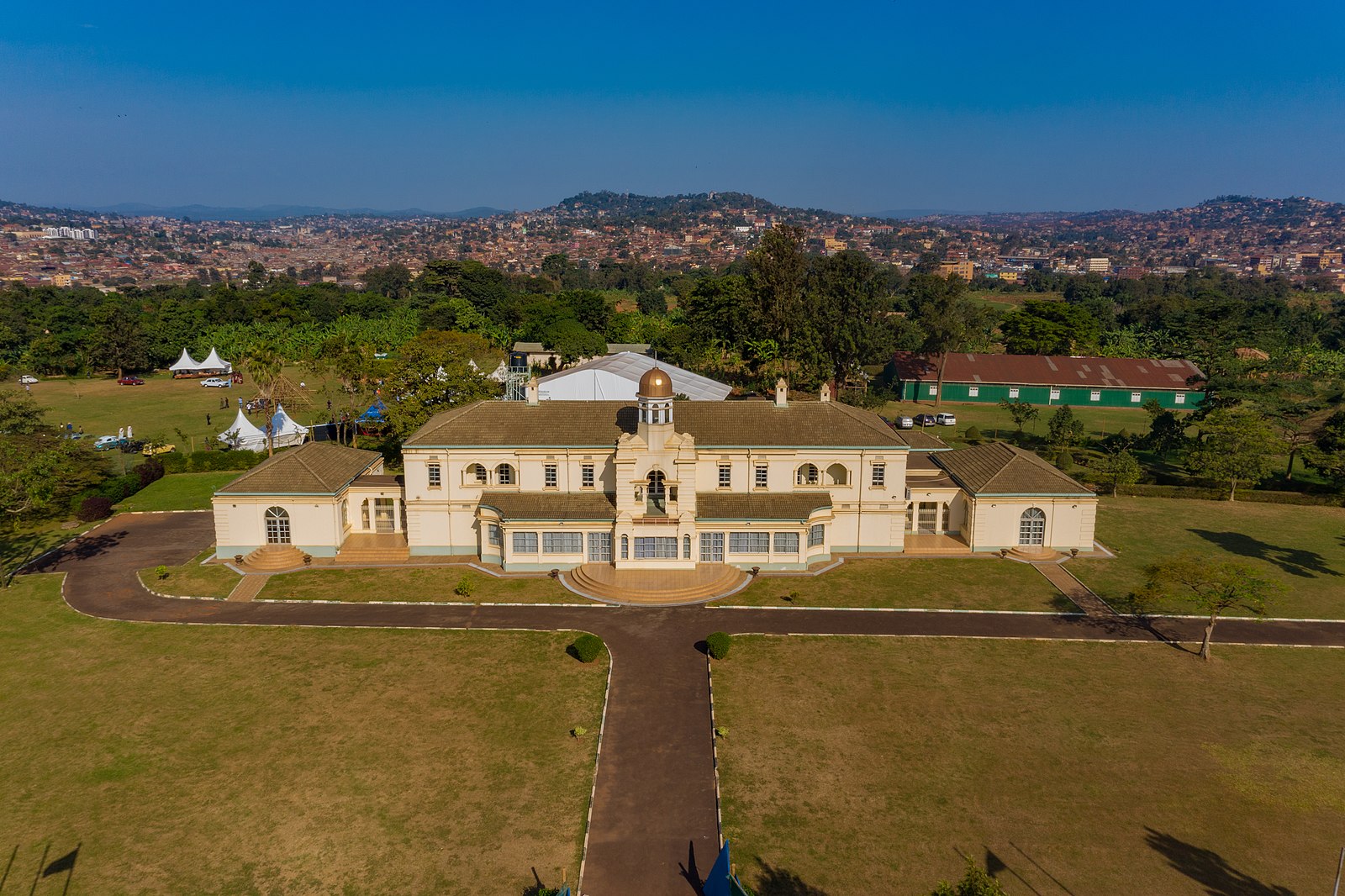Kasubi Royal Tombs: Rich History & Cultural Treasure of Buganda
Discover the Rich History of the Kasubi Royal Tombs: A Cultural Treasure of Uganda
Nestled on Kasubi Hill in the heart of Kampala, Uganda, the Kasubi Royal Tombs is a UNESCO World Heritage Site known for its deep cultural significance, architectural brilliance, and spiritual importance to the Buganda Kingdom. Spread across 26.8 hectares, this sacred burial ground serves as the final resting place for four Kabakas (kings) of Buganda, making it a must-visit for history enthusiasts and culture lovers. Its blend of traditional practices, remarkable craftsmanship, and ongoing spiritual significance make it an exceptional representation of African heritage.
Kasubi Royal Tombs Historical Significance and Cultural Heritage
The Kasubi Royal Tombs are more than just a burial ground; they symbolize centuries of Buganda’s royal history and rich traditions. Initially constructed as a palace for Kabaka Muteesa I in 1882, it was converted into a royal mausoleum in 1884. Today, the tombs stand as an enduring symbol of Buganda’s living traditions, with rituals and ceremonies still performed regularly, connecting the present generation to their ancestors.
At the core of this heritage site is the Muzibu-Azaala-Mpanga, a grand thatched structure that houses the royal tombs. The impressive dome-shaped building, made using traditional organic materials like wood, reeds, and thatch, exemplifies the genius of Buganda architecture. Despite a devastating fire in 2010, the resilience of the Buganda people and their commitment to preserving their cultural heritage have been central to restoring the tombs to their former glory.
A Spiritual and Religious Hub
For the Baganda people, the Kasubi Tombs serve as a major spiritual center. The site is more than just a historical monument; it remains a hub for cultural and religious practices, where the spirits of the Kabakas are believed to influence the daily lives of the kingdom’s people. The tombs also serve as a spiritual link between the living and the ancestral world, with ongoing rituals maintaining this connection. This spiritual significance adds to the uniqueness of the site, making it a true representation of the continuity of African traditions.
One of the most sacred areas within the tombs is the Kibira, a hidden forest within the structure where the spirits of the kings are believed to reside. Access to this area is strictly reserved for royal family members and spiritual leaders, emphasizing its importance in the Buganda cosmology.
Kasubi Royal Tombs Unique Architectural Marvel
One of the most fascinating aspects of the Kasubi Royal Tombs is their architectural design. The Muzibu-Azaala-Mpanga is a shining example of Ganda architecture, showcasing traditional building methods and organic materials used to create a structure that blends beauty and functionality. Materials like spear grass, bark cloth, wattle, and daub are skillfully utilized, making the site an exemplary piece of vernacular architecture that reflects the Buganda people’s respect for their environment and traditions.
Unesco removes Ugandan kings’ tombs from endangered heritage list
The layout of the tombs, the Olugya (Main Courtyard), and supporting structures like the drum house and gatehouse reflect the deep symbolism and values of the Buganda Kingdom. The spatial organization emphasizes the hierarchy and royal traditions of Buganda society. The unique thatching technique used to construct the roof of the Muzibu-Azaala-Mpanga adds to the site’s distinct character, while the organic materials allow the tombs to harmonize with their natural surroundings.
 The Buganda King’s Palace in Lubiri, a historic royal residence in Mengo, Kampala, showcases traditional grandeur with expansive grounds and symbolic architecture, central to the cultural heritage of the Buganda Kingdom.
The Buganda King’s Palace in Lubiri, a historic royal residence in Mengo, Kampala, showcases traditional grandeur with expansive grounds and symbolic architecture, central to the cultural heritage of the Buganda Kingdom.
Resilience Through Challenges and Restoration Efforts
The 2010 fire that severely damaged the main tomb building was a devastating blow to Uganda’s cultural heritage. However, it also showcased the dedication of the Buganda Kingdom, UNESCO, and the Ugandan government to preserve this historical gem. The restoration project, which has revived traditional building techniques, is not only aimed at maintaining the tombs’ original design but also at safeguarding the site from future threats, particularly fires.
This restoration has also become a unique opportunity to engage young people in learning traditional craftsmanship, ensuring that these valuable skills are passed down to future generations. The restoration efforts stand as a testament to the Baganda people’s resilience and dedication to preserving their rich cultural heritage.
Kasubi Royal Tombs Artifacts and Royal Symbols
Visitors to the Kasubi Tombs can observe various royal artifacts, including spears, shields, and drums, all of which reflect the power and traditions of the Buganda monarchy. Notably, the Mujaguzo (royal drums), which were once used in ceremonial events, and the royal spear and shield, offer glimpses into the lives of the past kings and their influence on the kingdom’s history.
The Bujjabukula (Gatehouse), standing at the entrance to the tombs, adds to the sacredness of the site by guarding the royal grounds. This structure, built by the Ngeye Clan, symbolizes the protection of the royal tombs and their exclusivity.
Resilience Through Challenges and Restoration Efforts
The 2010 fire that severely damaged the main tomb building was a devastating blow to Uganda’s cultural heritage. However, it also showcased the dedication of the Buganda Kingdom, UNESCO, and the Ugandan government to preserve this historical gem. The restoration project, which has revived traditional building techniques, is not only aimed at maintaining the tombs’ original design but also at safeguarding the site from future threats, particularly fires.
This restoration has also become a unique opportunity to engage young people in learning traditional craftsmanship, ensuring that these valuable skills are passed down to future generations. The restoration efforts stand as a testament to the Baganda people’s resilience and dedication to preserving their rich cultural heritage.
Kasubi Royal Tombs Artifacts and Royal Symbols
Visitors to the Kasubi Tombs can observe various royal artifacts, including spears, shields, and drums, all of which reflect the power and traditions of the Buganda monarchy. Notably, the Mujaguzo (royal drums), which were once used in ceremonial events, and the royal spear and shield, offer glimpses into the lives of the past kings and their influence on the kingdom’s history.
The Bujjabukula (Gatehouse), standing at the entrance to the tombs, adds to the sacredness of the site by guarding the royal grounds. This structure, built by the Ngeye Clan, symbolizes the protection of the royal tombs and their exclusivity.
Why Visit the Kasubi Royal Tombs?
For history buffs, cultural enthusiasts, and spiritual seekers, the Kasubi Royal Tombs offer a rare chance to explore the heart of Buganda’s royal history. Visitors can immerse themselves in the rich traditions of the Buganda Kingdom, witness stunning indigenous architecture, and learn about the Kabakas that shaped Uganda’s history.
The tombs also stand as a symbol of resilience and continuity, showing how cultural heritage can endure despite adversity. A visit to this historical site offers an insightful look into the fusion of past and present, where the traditions of the Buganda Kingdom continue to thrive in modern Uganda.
Practical Information for Visitors
The Kasubi Royal Tombs are located just 20 minutes from Kampala’s city center, making them easily accessible by car or local transportation like Boda Bodas (motorbikes) and Matatus (minibuses). The entrance fee is affordable, with adults charged UGX 35,000 and children UGX 5,000 (as of 2022). These fees help maintain and preserve this historical site, ensuring its legacy for future generations.
The Kasubi Royal Tombs represent the pinnacle of Uganda’s rich history, cultural heritage, and architectural brilliance. As a UNESCO World Heritage Site, they are a testament to the strength and continuity of Buganda’s royal traditions. Whether you visit for the site’s historical significance, architectural marvel, or spiritual importance, the Kasubi Tombs offer an unparalleled experience of Uganda’s enduring legacy. Make this landmark part of your journey and discover the spiritual heart of the Buganda Kingdom.


This website has quickly become my go-to source for [topic]. The content is consistently top-notch, covering diverse angles with clarity and expertise. I’m constantly recommending it to colleagues and friends. Keep inspiring us!